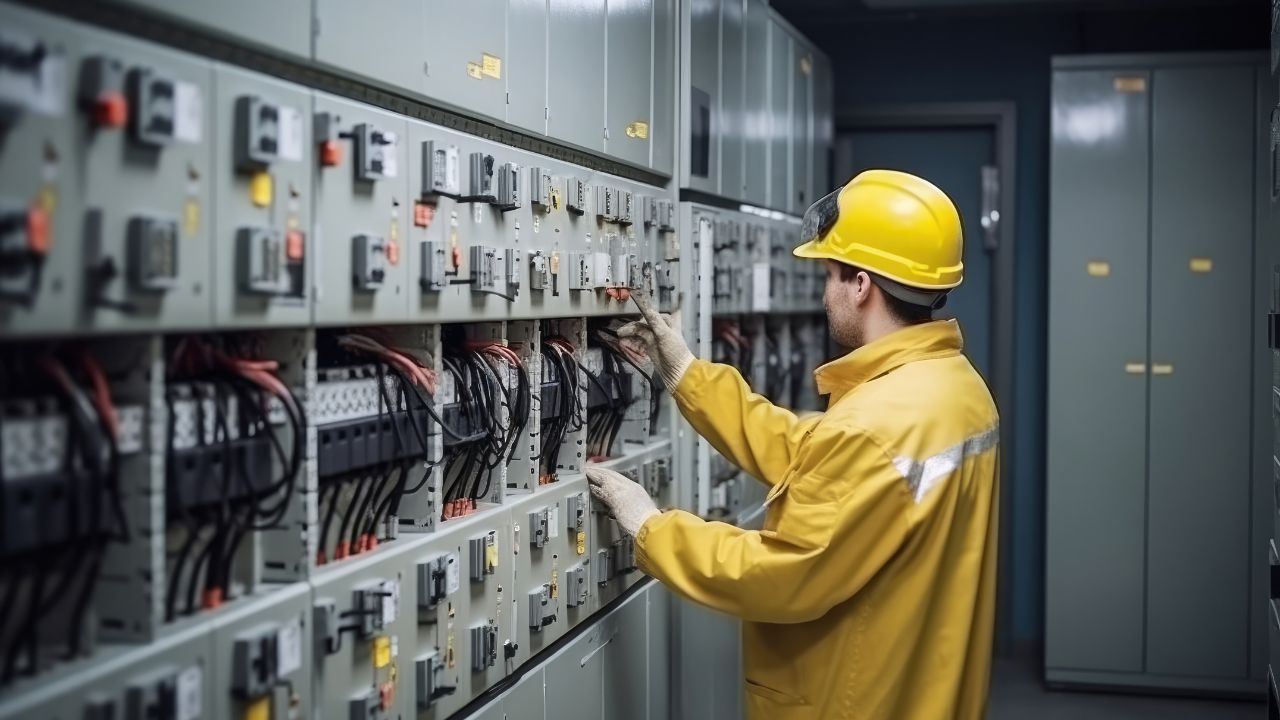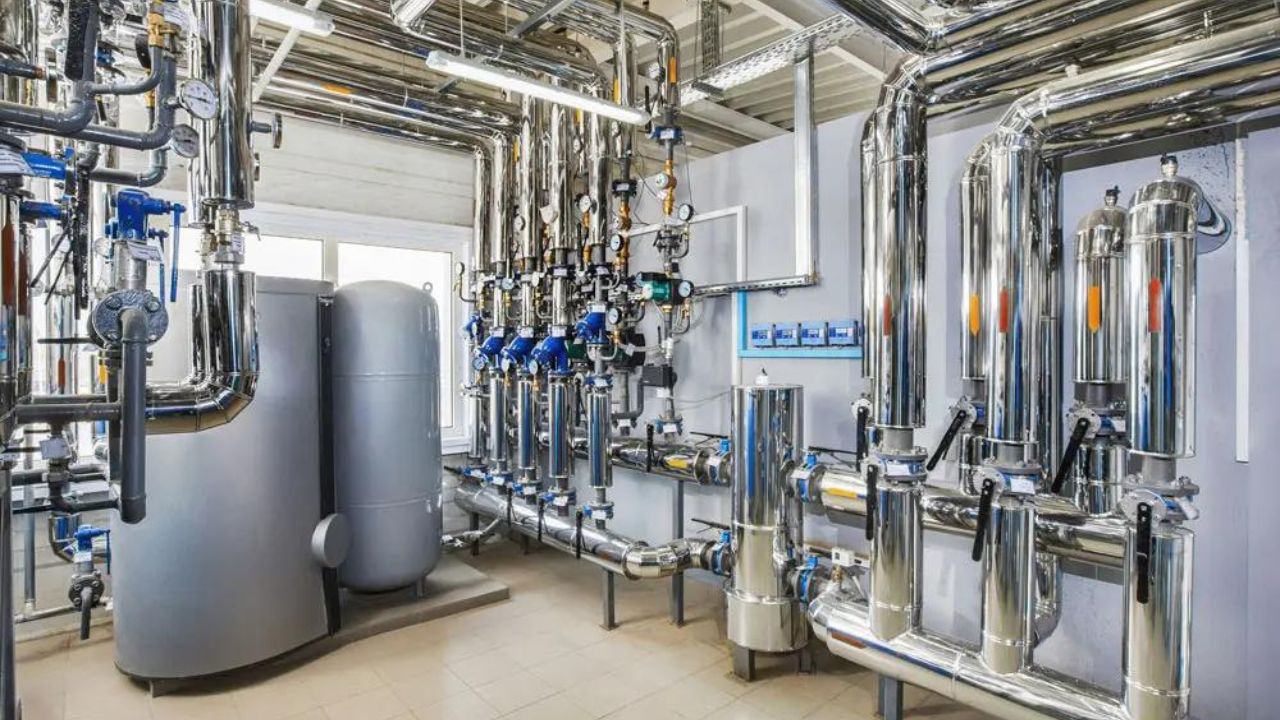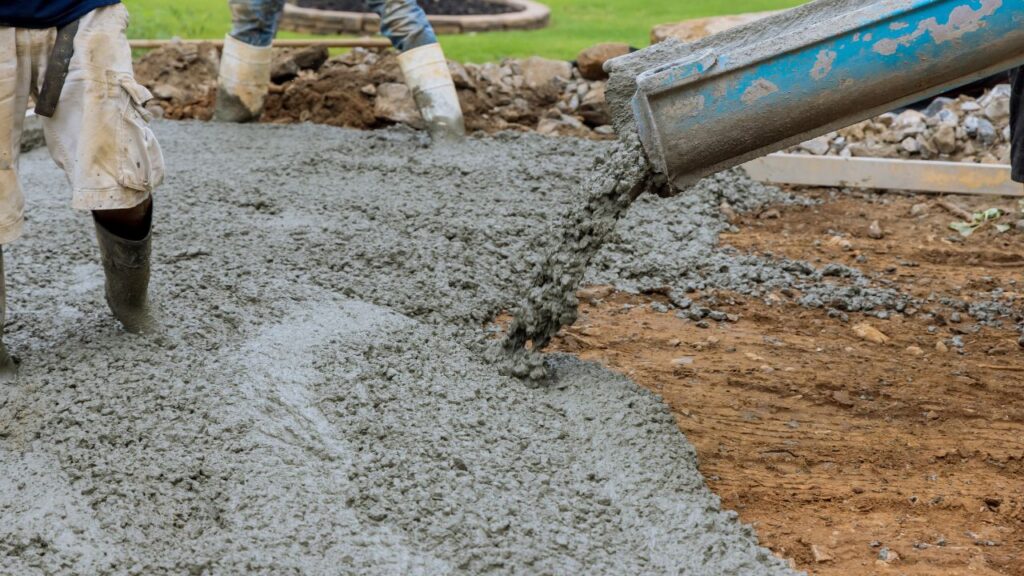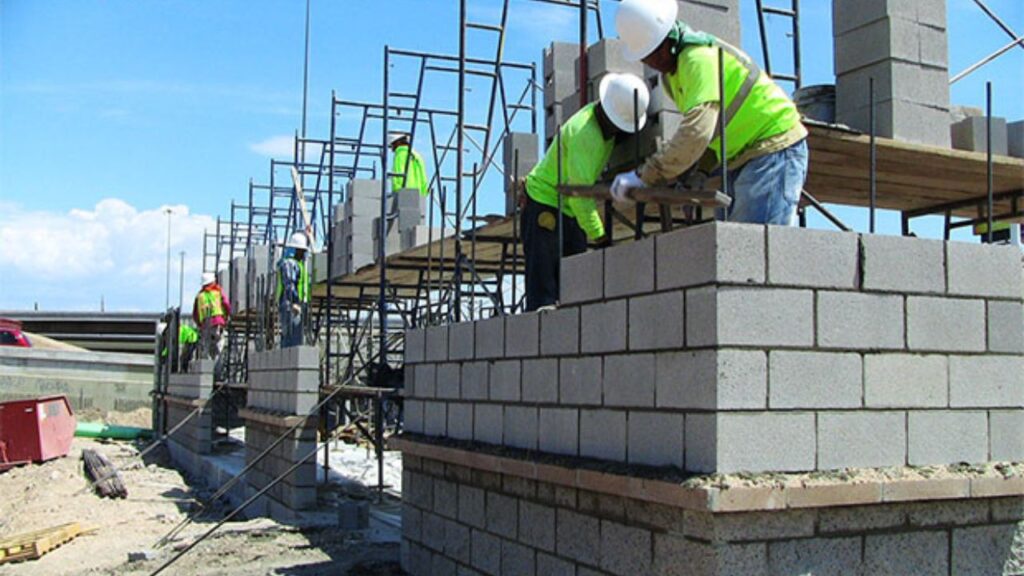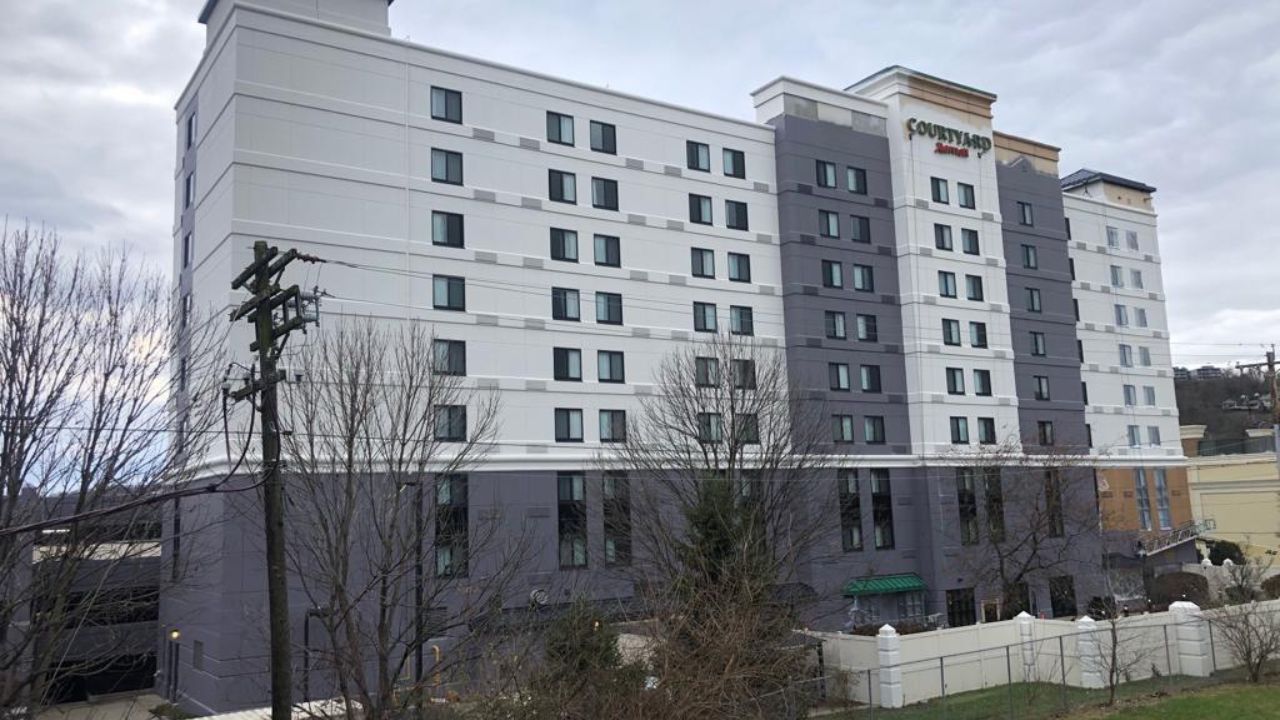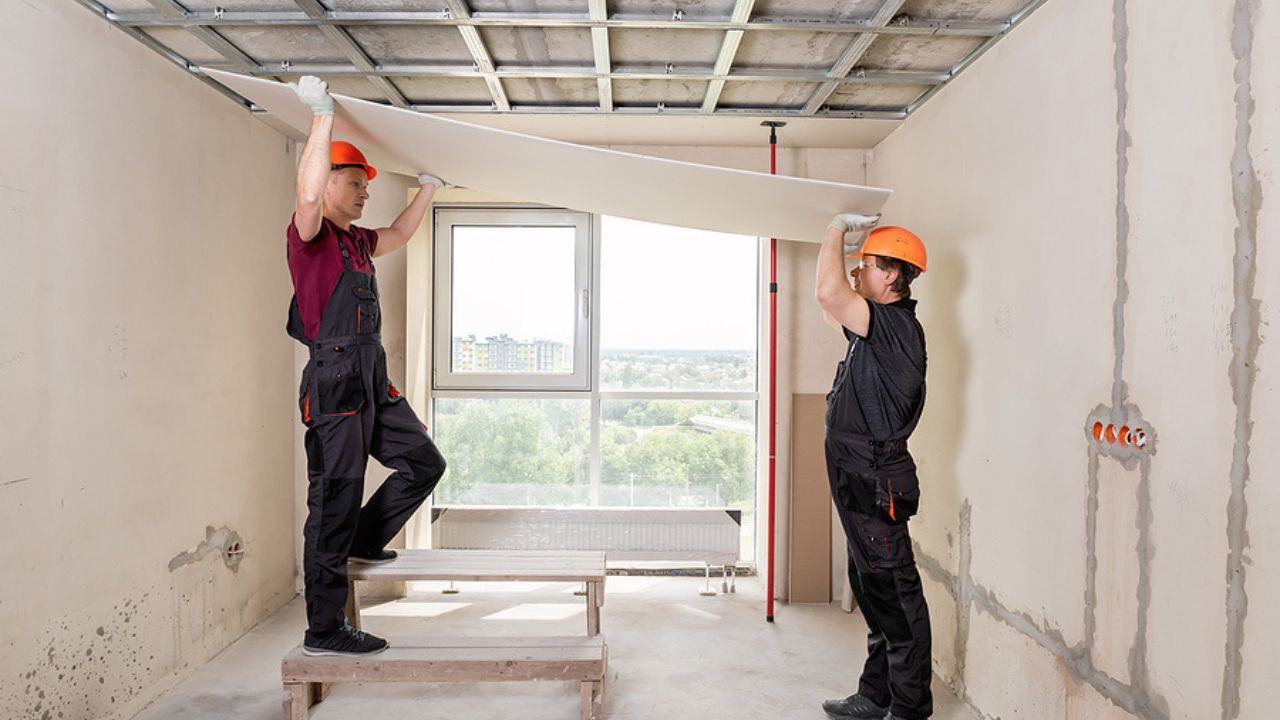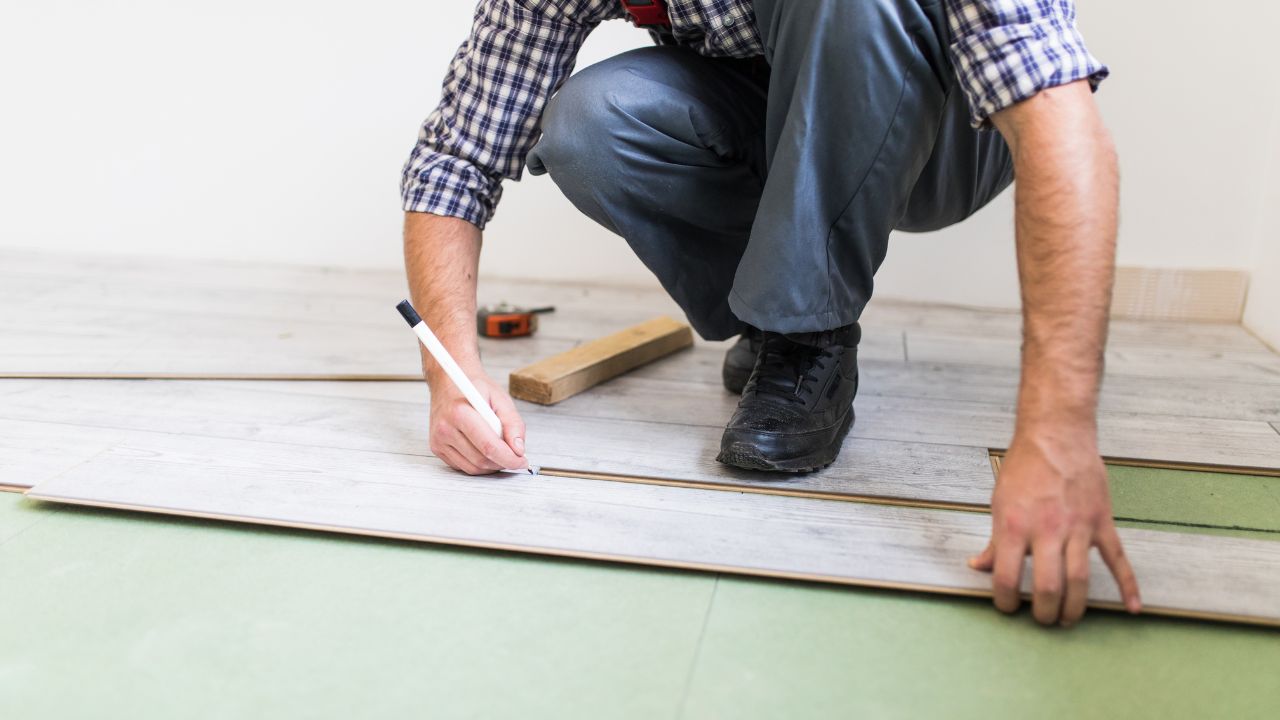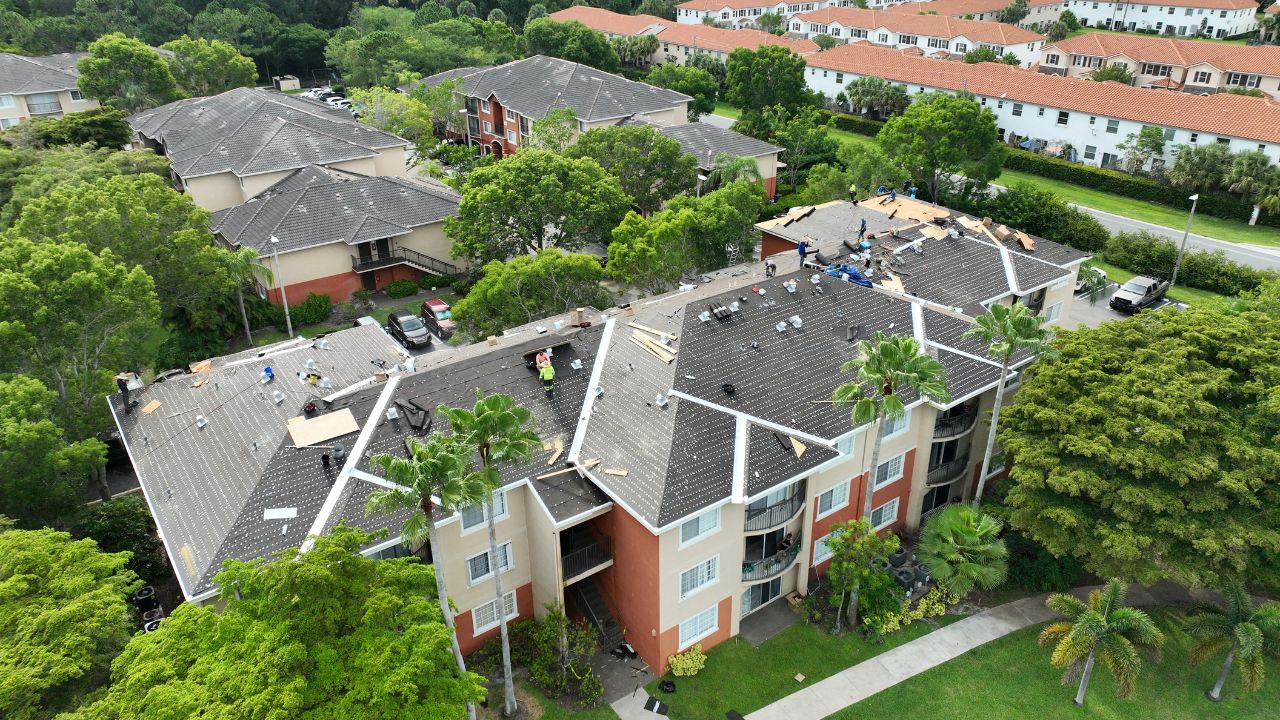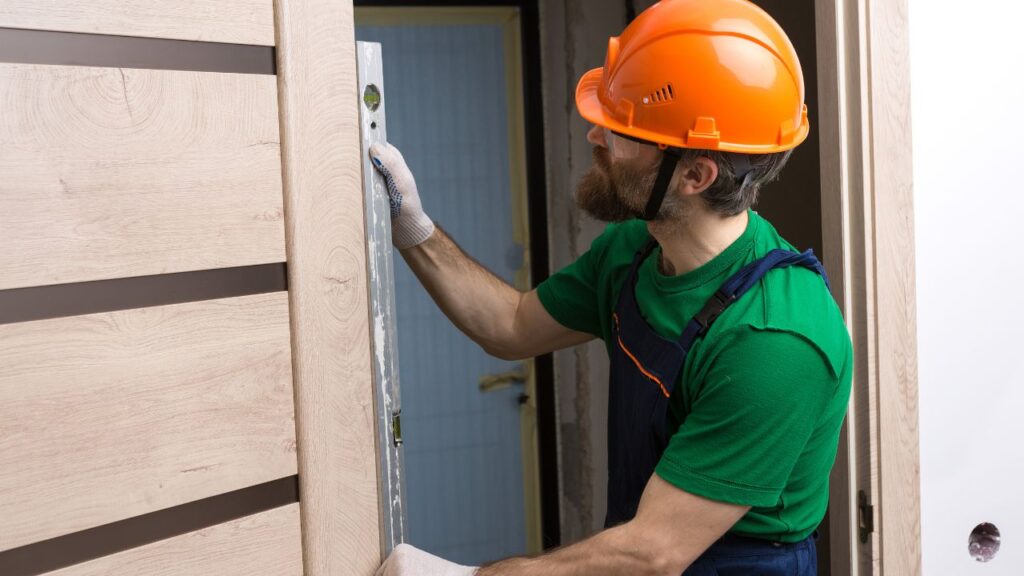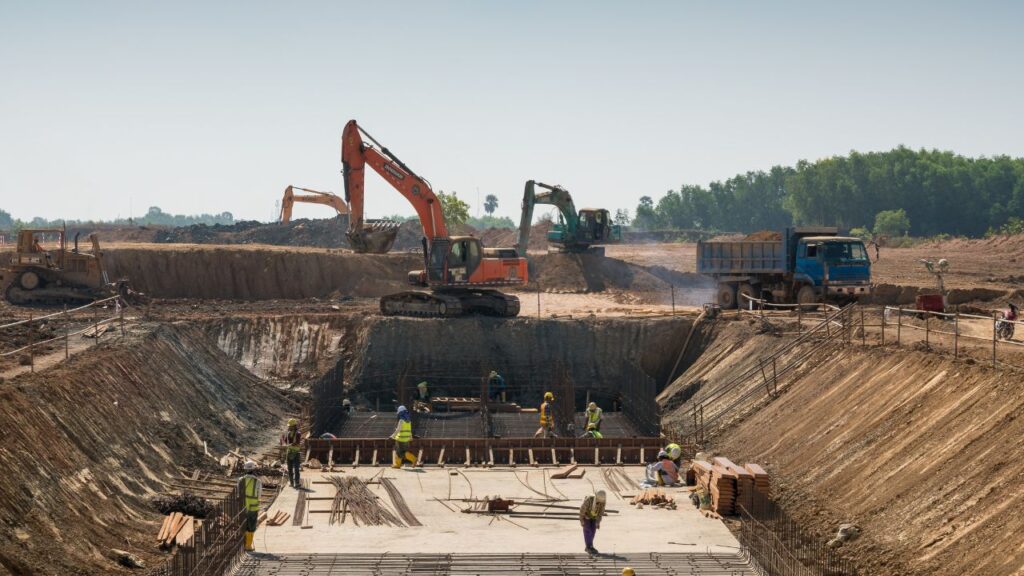- Homepage
- Blogs
Condo Construction Cost Breakdown
Leading provider of condo construction cost estimating.
Condominium buildings, much like apartment buildings, vary significantly in size, style, and associated costs depending on their design and location. The national average cost range for constructing a condominium building typically falls between $1.8 million and $5.4 million, with most projects costing around $3.6 million for a mid-range 20-unit building that includes a shared lobby and basic amenities. At the lower end of the spectrum, a 2-unit condo home in a suburban area might cost as little as $540,000 to build. On the higher end, an upscale 100-unit condominium complex with premium shared amenities in a rapidly developing urban area can cost up to $21.6 million.
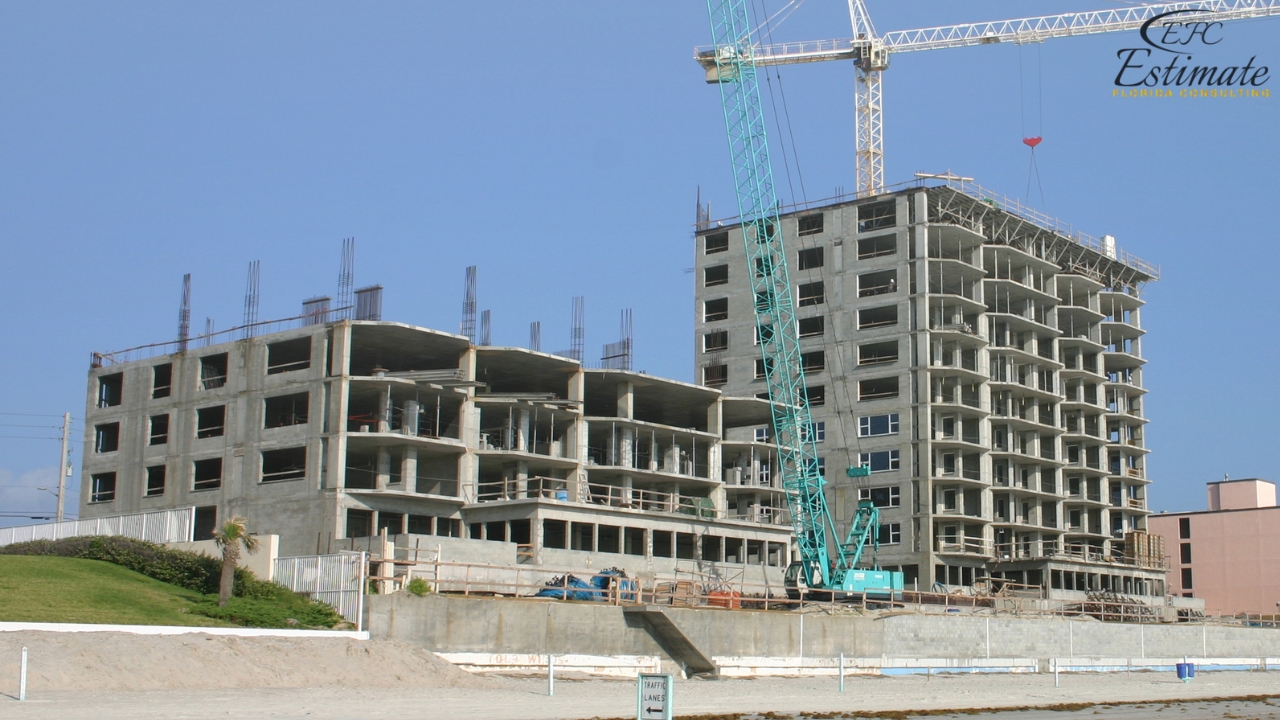
Condo Construction Cost per Square Foot
The cost to construct a condominium can vary widely based on several factors, including location, unit type, building design, and amenities offered. Urban areas typically have higher construction costs compared to suburban locations due to labor, materials, and infrastructure demands. Generally, the cost per square foot ranges between $216 and $480, covering only the construction phase. These estimates exclude expenses like land acquisition, parking facilities, or soft costs related to marketing and selling the finished units. It’s important to note that these figures represent the cost of constructing the entire building rather than individual units. Costs per square foot can fluctuate depending on the proportion of shared spaces to private units. Private units often have higher construction costs per square foot compared to shared areas, which contributes to cost variations within the same building.
Condo Construction Cost per Unit
Condominium construction, similar to apartments and other multi-family housing, is often calculated on a per-unit or per-square-foot basis. This approach simplifies cost comparisons across projects, whether it’s a 10-unit building or a 100-unit complex, as unit sizes and total building dimensions can differ significantly. On average, the cost to build a condo ranges between $134,400 and $270,000 per unit. Lower-end condos with basic finishes and fewer amenities fall on the lower side of this spectrum, while high-end condos with premium features and more shared amenities tend to be more expensive. Most condominium projects typically land within this cost range, making it a reliable benchmark for planning and budgeting.
Number of Units | Cost Range |
2 Units | $268K – $540K |
10 Units | $1.34M – $2.7M |
20 Units | $2.68M – $5.4M |
50 Units | $6.72M – $13.5M |
100 Units | $13.44M – $27M |
200 Units | $26.88M – $54M |
Cost to Build a Condo Building by Type
Condominium buildings, like other multi-family structures, can vary widely in size, style, and construction type. These range from small detached units to towering high-rises in urban areas with over 200 units and luxury amenities. Larger condo buildings naturally come with higher overall construction costs. Similar to square footage calculations, costs for shared spaces can differ from those for private units, with averages calculated to reflect the entire building, including amenities and unit count.
The type of condo building significantly impacts the overall cost due to differences in scale, unit numbers, and complexity. Detached condos are typically the smallest and least expensive, while high-rise buildings are the largest and most costly to construct.
Type of Condo | Number of Units | Cost Range |
Detached | 1 | $134K – $270K |
Low-Rise | 5 – 50 | $672K – $13.5M |
Mid-Rise | 50 – 200 | $6.72M – $54M |
High-Rise | 200+ | $26.88M – $90M |
Detached Condo
The cost to build a single detached condominium typically ranges from $134,400 to $270,000. Unlike traditional condos, a detached unit doesn’t share walls with other residences, giving it a unique appeal. These condos are often part of a cluster governed by a shared condominium association. Detached condos are usually small homes, measuring under 1,000 square feet. Unlike shared-space condos, owners are responsible for the exterior maintenance of their unit, although the condo association often sets guidelines for appearance and exterior modifications. This balance between independence and governance makes detached condos a distinctive choice for buyers.
Low-Rise Condo
Constructing a low-rise condominium building costs between $672,000 and $13.5 million. These buildings generally contain 5 to 50 units spread over a maximum of five floors. Low-rise condos are often found in suburban areas and are less expensive to build due to their simpler structural requirements compared to taller buildings. Many low-rise condos include shared amenities such as lobbies, fitness centers, and pools, either within the building or in a separate structure serving multiple units. Clusters of low-rise buildings may share common facilities, making them cost-effective and appealing to suburban developers.
Mid-Rise Condo
The average cost for constructing a mid-rise condo building falls between $6.72 million and $54 million. These buildings typically house 50 to 200 units and are often found in urban and suburban areas. Mid-rise condos often include a variety of shared amenities like lobbies, fitness centers, and both indoor and outdoor pools, which add to their appeal but also increase construction costs. These condos are frequently part of larger communities with multiple mid-rise buildings, where a central facility may house additional amenities like meeting rooms or recreational spaces.
High-Rise Condo
Building a high-rise condominium costs between $26.88 million and $90 million. High-rise buildings, which usually contain over 200 units, are the most expensive condos to construct due to the additional structural engineering and safety measures required for their height. These buildings are predominantly found in urban areas, often featuring luxury units and a wide range of shared amenities, including lobbies, rooftop decks, fitness centers, and pools. Many high-rise condos also incorporate parking garages or are strategically located near public transportation hubs for added convenience, making them a prime choice for city living.
New Condo Unit Construction Cost Breakdown
The cost to build a condominium unit shares similarities with constructing apartment buildings, with expenses increasing based on the building’s size, material quality, and design complexity. Luxury condo buildings cost more than standard mid-range buildings, and high-rises with 200 or more units are significantly pricier than small two-unit condo buildings.
Every condo building includes foundational structural costs like the foundation, walls, and roof. The materials used, such as wood framing or masonry, can influence these costs. Electrical wiring must service the entire building, and plumbing must connect to and through each unit. Individual costs for kitchens, bathrooms, and HVAC systems are calculated per unit. Additionally, flooring, windows, doors, and interior finishes for both individual units and shared spaces contribute to the total expenses. More extensive or high-end shared areas, such as lobbies and amenities, can drive up costs. This variability means that construction costs often differ between units within the same building.
It’s challenging to extrapolate per-unit costs because the expense is distributed across the entire building. Architect, contractor, and structural engineer fees are calculated as a percentage of the total project cost and are added to the final price rather than included in the base construction cost. For example, architects typically charge 9% of the total, while contractors may add 25%. Below is an average percentage breakdown of project costs:
Project Breakdown | Percent of Project Cost |
Floor Finish | 4% |
Interior Features | 4% |
Bath Detail | 4% |
Windows and Doors | 5% |
Interior Finish | 8% |
Kitchen | 8% |
Foundation | 9% |
Electrical | 10% |
Roof and Cover | 10% |
Plumbing | 12% |
Floor Structure | 12% |
Walls and Exterior Finish | 14% |
Architect Fees (added) | 9% of total cost |
Structural Engineer Fees (added) | 1.5% of total cost |
Contractor or Builder Cost (added) | 25% of total cost |
Modular Condo Cost
In many urban areas, modular construction has become a popular method for building large condo complexes. Modular construction involves fabricating substantial sections of the building off-site and then transporting and assembling them at the construction site. This method offers several benefits, including stronger structures, reduced weather-related delays, and often lower labor costs. The average cost for modular condo construction typically ranges from $216 to $270 per square foot, making it a cost-effective solution, particularly for high-rise buildings with luxury features. Modular construction is also favored for its efficiency and ability to meet tight project deadlines while maintaining quality.
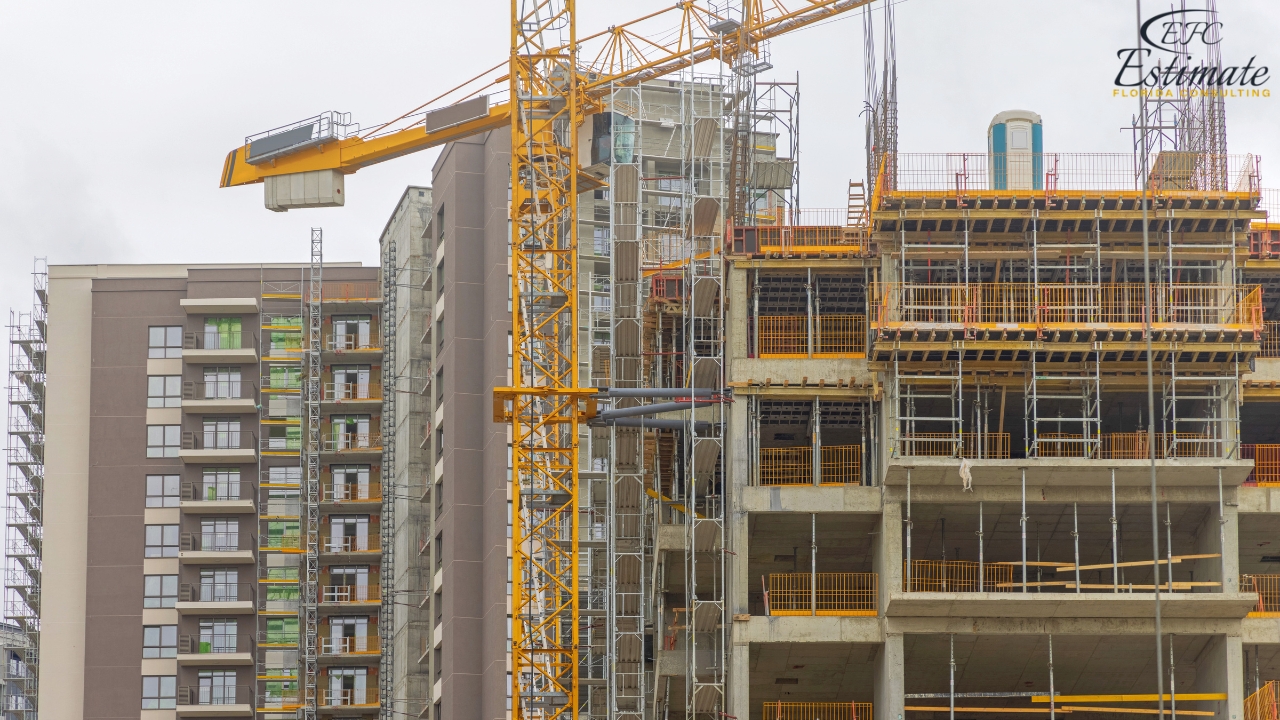
Build Luxury Condos
Luxury condominium buildings are designed to cater to upscale clientele, particularly in urban or affluent areas. These condos often feature premium finishes, advanced technologies, and high-end amenities. Construction costs for luxury condos typically start around $480 per square foot, with some reaching up to $720 per square foot in prestigious locations. These figures account for construction costs only and exclude expenses for land acquisition, marketing, and other soft costs.
Luxury condos are often strategically located in malls, shopping districts, or vibrant mixed-use communities. These settings allow residents to enjoy a live-work-play lifestyle, with access to dining, shopping, and entertainment within walking distance. Such developments have gained significant popularity in many high-demand areas, as buyers seek convenience and luxury in one package.
To meet these expectations, luxury condos typically include premium amenities such as state-of-the-art fitness centers, exclusive entertainment lounges, rooftop pools, and private access to nearby shopping and dining facilities. While the construction costs for these buildings are higher, the added features and desirable locations often justify the investment, as buyers are willing to pay a premium for the lifestyle associated with these properties.
Condo Construction Styles
Condominium buildings can be designed in a variety of architectural styles, each offering distinct aesthetics and layouts. These styles cater to different preferences and needs, from duplex-like condexes to detached units or modern high-rises. While construction costs are generally influenced more by the size and materials used than by style, each style has unique features and governing rules that affect how the property is managed and maintained.
Townhouse-Style Condo
Townhouse-style condos resemble traditional townhouses but are managed by a condo association. These homes are typically attached in pairs or rows, and owners have full control over the interior of their unit, while the exterior is managed by the association. This arrangement has both advantages and disadvantages: for instance, the association handles major exterior repairs like roof leaks, but any modifications, such as adding a ductless air conditioning unit, require prior approval. Townhouse-style condos are popular in suburban areas for their balance of independence and shared responsibility.
Ranch-Style Condo
Ranch-style condos are often classified as condexes, where the exterior resembles a larger ranch home with dual entrances. Each side of the building has an identical layout, and ownership is split between the two residents. Maintenance and repair costs for the exterior, including the roof, are shared between the owners, regardless of whether both units are impacted. Ranch-style condos can be single-story or two-story, depending on the design, and they are common in suburban and rural areas due to their spacious layouts and simpler structures.
Modern Farmhouse Condo
Modern farmhouse condos blend rustic charm with practical design. These condos may be built as pole barns with two to four units or as oversized farmhouses divided into multiple living spaces. Exteriors often feature white board-and-batten siding with classic farmhouse aesthetics. Units are typically organized as two-story configurations, with some offering porch access for ground-floor residents and balconies for upper-level units. Modern farmhouse condos are popular in semi-rural areas for their unique style and flexible layouts.
Victorian Condo
Victorian condos are typically historic Victorian homes repurposed into two or more units. These buildings retain their original exterior details, such as gingerbread trim and distinct color palettes, and often feature shared interior spaces like lobbies and staircases. Inside, one unit may occupy the first floor while others take up the upper levels. These condos are more common in suburban neighborhoods with older, established housing stock and appeal to those who value character and historic charm.
Craftsman Condo
Craftsman condos often take the form of detached units or condexes. These homes, inspired by the Craftsman style, may be built as bungalows, Prairie-style homes, or four-squares. Craftsman condos are typically small and located in neighborhoods, offering a sense of community. Owners have control over the interior, but exterior changes and repairs require approval from the condo association. This oversight ensures the architectural integrity of the property is maintained.
Win More Projects With Us
Colonial Condo
Colonial condos are large, traditional Colonial-style homes converted into two or three separate units. From the outside, they maintain the appearance of a single-family home, but inside, the space is divided into distinct condos, each with private entrances. Some Colonial condos also feature side entrances directly into specific units. The exterior is a shared responsibility, with all owners contributing to a condo association fund for upkeep and repairs. These condos are popular in suburban areas where Colonial architecture is prevalent.
Modern Condominium
Modern condos are versatile and found in various settings, from urban high-rises to industrial loft conversions. Urban modern condos often include mixed-use developments with shopping, dining, and other amenities integrated into the same building. In older areas, modern condos might be carved out of warehouses or industrial spaces, offering open floor plans and a unique loft-like ambiance. These properties typically come with a condo fee that covers the maintenance of communal areas and amenities like fitness centers, rooftop decks, and shared lounges. Modern condos are highly sought after for their convenience and contemporary style, particularly in urban markets.
Monthly Costs of Owning a Condo
Owning a condo comes with its own set of monthly costs, which differ from those of a single-family home. Along with your mortgage and property taxes, you’ll also pay a monthly condo fee to the condo association. This fee covers expenses related to maintaining and operating the building and its common areas. The amount varies widely depending on the building’s size, amenities, and location. For instance, a smaller condo might charge around $60 per month, while a luxury high-rise with extensive amenities could have fees exceeding $840 per month. Factors like the number of units and shared amenities heavily influence these costs.
Get Acquainted with Estimation
High Rise Building Construction Cost Estimator
Maximize Profits: Budgeting Hacks for Big Construction Projects
Pros and Cons of Living in a Condo
Condo living comes with both advantages and disadvantages, making it an appealing choice for some and a less ideal option for others. One of the biggest benefits is that condos offer the opportunity to own your home and build equity, unlike renting where you don’t accumulate long-term value. You aren’t subject to a landlord’s decisions, giving you autonomy over your living space. However, your ownership is limited to your individual unit. You contribute to a shared fund to cover building-wide repairs and maintenance, such as fixing a roof leak on the opposite side of the property. This shared responsibility ensures upkeep but reduces individual control over the property’s appearance and management.
For many, condos are a practical choice, especially for seniors, first-time homebuyers, and those who travel frequently. With maintenance tasks handled by the condo association, owners can enjoy a low-maintenance lifestyle. However, there are drawbacks. Condos tend to appreciate in value more slowly than single-family homes, and they can be harder to sell, particularly in competitive markets. This means you might face challenges in profiting from your investment, especially if you decide that close proximity to neighbors isn’t for you. Despite these considerations, condos remain a popular option for those seeking convenience and community-focused living.
Condo vs. Apartment Price
Condos and apartment buildings share many similarities in construction methods and materials, leading to comparable building costs. The primary difference lies in ownership and responsibility. In a condominium building, each unit is individually owned, while the building as a whole is managed by a condo association. Owners pay a monthly fee to the association for maintenance and shared amenities. In contrast, apartment buildings are owned by a single entity that rents out individual units. Renters don’t own any part of the building, and they are not responsible for maintenance or repairs, which are handled by the building owner.
While construction costs per square foot are similar for both condos and apartments, condos tend to be slightly more expensive to build. This is because condo owners may demand higher-quality finishes or specific features tailored to individual preferences, whereas apartment units are often designed with cost efficiency in mind for rental purposes. The average cost to build an apartment ranges from $108 to $516 per square foot, while building a condo costs approximately $216 to $480 per square foot. Ultimately, the total cost depends on factors like location, number of units, and the overall quality of the building.
Type | Costs per Sq.Ft. |
Apartment | $108 – $516 |
Condo | $216 – $480 |
Condominium vs. Townhouse Price
Condos and townhouses share similarities but differ in ownership and maintenance responsibilities. Townhouses are owner-occupied units typically built in attached rows. Owners are generally responsible for maintaining the interior and sometimes the exterior of their units. Townhouses may also have a homeowners’ association (HOA) that manages shared spaces and amenities, but the fees are usually lower compared to condos.
In contrast, condos involve owning only the interior of your unit, while the condo association manages and maintains the building’s exterior and shared amenities. This reduces personal maintenance responsibilities but comes with higher monthly fees.

Construction costs between the two also vary significantly. Townhouses are often built individually or in small groups, whereas condos are constructed as large buildings with shared systems and spaces. As a result, the cost to build a townhouse ranges from $132 to $162 per square foot, while constructing a condo building averages $216 to $480 per square foot, depending on the location and features.
Type | Costs per Sq.Ft. |
Townhouse | $132 – $162 |
Condo | $216 – $480 |
Enhancement and Improvement Costs
Build a Parking Garage
If you’re constructing a larger condo building, particularly in an urban area, adding a parking garage can be a valuable enhancement. Parking garages can be built as standalone structures, integrated into the building, or even underground to conserve space. Dedicated, covered, and secure parking is a significant selling point for potential buyers, especially in areas with limited parking options. On average, building a parking garage costs around $11.7 million, but it can significantly increase the property’s overall value. This added feature not only attracts more buyers but also enables higher pricing for the condo units, making it a worthwhile investment.
Additional Considerations and Costs
Varying Costs
The cost of constructing condos varies widely depending on factors such as location, building size, and materials. Urban areas with high demand for housing tend to have higher costs, influenced by both construction expenses and the rising cost of land in densely populated regions.
Development
You don’t need a real estate license to build a condo building, as these structures are designed to be sold directly to occupants. However, thorough planning and compliance with local regulations are crucial for a successful development.
Soft Costs
Beyond construction expenses, there are often significant soft costs to account for. These include government fees, building permits, community benefit charges, and closing costs. Such expenses can quickly add up and vary by location, so they should be carefully factored into the project budget.
Purchase and Sale
In many cases, individual condo units are sold before the building is completed, providing developers with early cash flow. Some developers strategically hold back a few units to sell later, often at higher prices, once the building is near full occupancy.
Occupancy
Before new owners can move into their units, the entire building must be completed, pass all final inspections, and receive occupancy permits. These permits ensure that the structure is safe and meets all local building codes, allowing the owners to take legal possession of their homes. This final step is essential for the successful handover of the property.
Download Template For Condo Construction Project Breakdown
- Materials list updated to the zip code
- Fast delivery
- Data base of general contractors and sub-contractors
- Local estimators

Question Answer
Frequently Asked Question
The national average cost for constructing a condominium building ranges from $1.8 million to $5.4 million, with most mid-range projects costing around $3.6 million for a 20-unit building. Costs vary based on size, style, location, and amenities. For smaller projects, such as a 2-unit condo, costs may start at $540,000, while upscale 100-unit complexes in urban areas can reach $21.6 million.
The cost to construct a condo ranges between $216 and $480 per square foot. These estimates cover the construction phase only and exclude expenses like land acquisition, parking, and marketing. Costs can vary based on location, design, and proportion of shared spaces to private units.
The average cost to build a condominium ranges from $134,400 to $270,000 per unit, depending on finishes and amenities. Lower-end units are more affordable, while luxury condos with premium features fall on the higher side of this range.
Condo construction costs scale with the number of units:
- 2 Units: $268,000 - $540,000
- 10 Units: $1.34M - $2.7M
- 20 Units: $2.68M - $5.4M
- 50 Units: $6.72M - $13.5M
- 100 Units: $13.44M - $27M
- 200 Units: $26.88M - $54M
Condominiums vary by type, with costs reflecting scale and complexity:
- Detached condos (1 unit): $134,400 - $270,000
- Low-rise (5–50 units): $672,000 - $13.5M
- Mid-rise (50–200 units): $6.72M - $54M
- High-rise (200+ units): $26.88M - $90M
Key factors include location, building size, materials, design complexity, and the extent of shared amenities. Urban locations and luxury finishes drive higher costs, while suburban settings with basic amenities are more economical.
Condo construction costs are distributed across various categories:
- Foundation: 9%
- Walls and exterior finish: 14%
- Roof: 10%
- Plumbing: 12%
- Electrical systems: 10%
- Interior finish: 8%
- Windows and doors: 5%
Architect and contractor fees are added, typically 9% and 25% of the total project cost, respectively.
Modular construction involves off-site fabrication of building sections, which are then assembled on-site. Costs typically range from $216 to $270 per square foot, offering efficiency and reduced delays compared to traditional methods.
Luxury condos cost between $480 and $720 per square foot, reflecting premium finishes, high-end amenities, and strategic urban locations. These buildings often feature features like rooftop pools, fitness centers, and proximity to shopping districts.
Monthly expenses include mortgage payments, property taxes, and condo association fees. These fees cover building maintenance, shared amenities, and utilities. Costs range from $60 for smaller condos to over $840 for luxury high-rises.
Comprehensive Trade-Specific Estimates
At Estimate Florida Consulting, we offer detailed cost estimates across all major trades, ensuring no part of your project is overlooked. From the foundation to the finishing touches, our trade-specific estimates provide you with a complete and accurate breakdown of costs for any type of construction project.

Testimonials
What Our Clients Say
We take pride in delivering accurate, timely, and reliable estimates that help contractors and builders win more projects. Our clients consistently praise our attention to detail, fast turnaround times, and the positive impact our estimates have on their businesses.
Estimate Florida Consulting has helped us win more bids with their fast and accurate estimates. We trust them for every project!

Steps to Follow
Our Simple Process to Get Your Estimate
01
Upload Plans
Submit your project plans, blueprints, or relevant documents through our online form or via email.
02
Receive Quotation
We’ll review your project details and send you a quote based on your scope and requirements.
03
Confirmation
Confirm the details and finalize any adjustments to ensure the estimate meets your project needs.
04
Get Estimate
Receive your detailed, trade-specific estimate within 1-2 business days, ready for your project execution.


